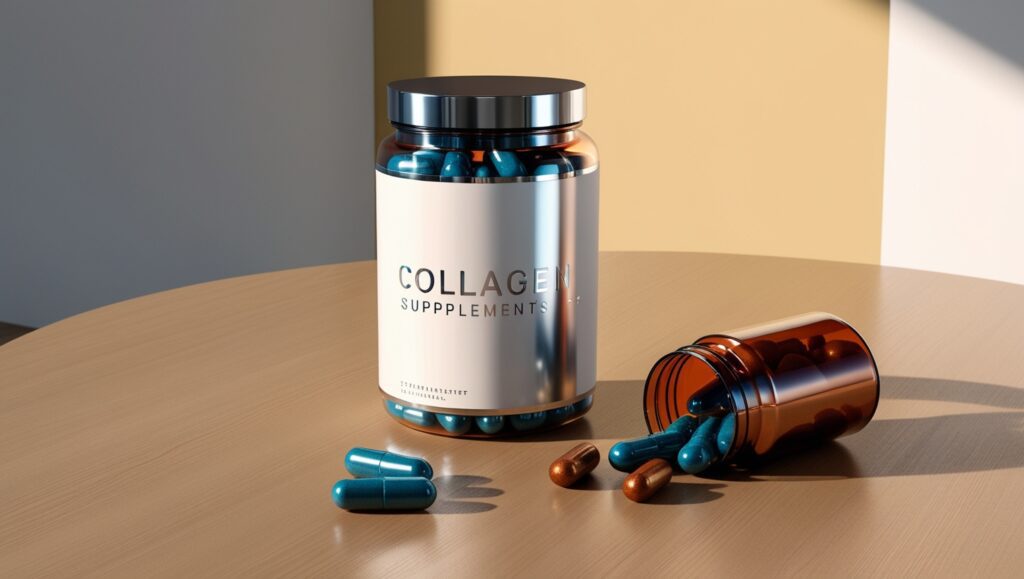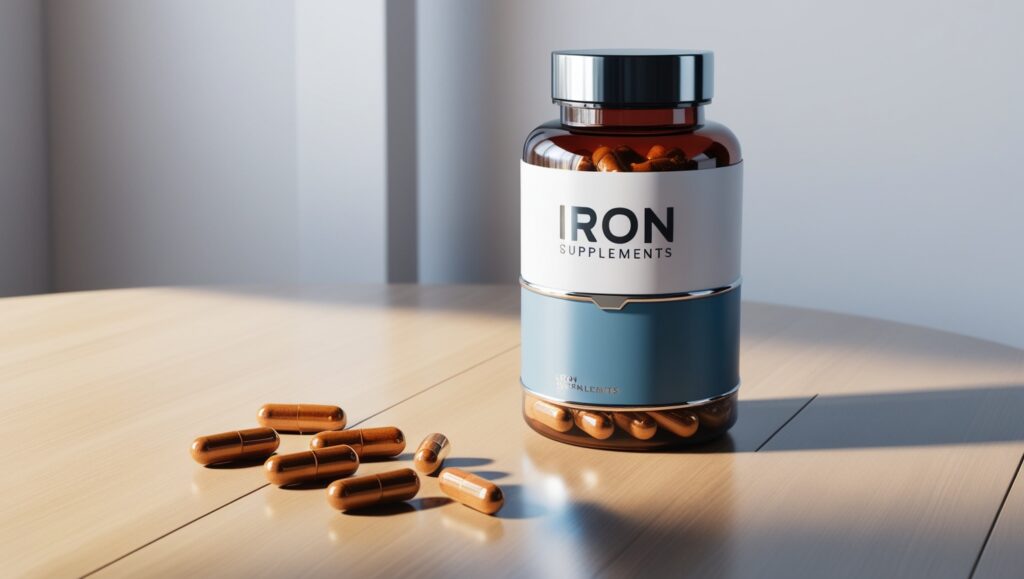Arthritis, affecting over 54 million adults in the United States, leads to painful inflammation and joint stiffness. Despite lacking a known cure, individuals with arthritis often explore complementary remedies such as herbs and supplements to alleviate discomfort.
Cordyceps, a unique medicinal mushroom with centuries of use in Traditional Chinese Medicine, is gaining attention for its potential arthritis relief. This guide delves into emerging scientific insights on the arthritis-cordyceps connection and its potential joint-protecting abilities.
Arthritis, a prevalent condition impacting millions, casts a shadow of pain and stiffness over the lives of many. In seeking relief, individuals often turn to alternative remedies, seeking solace beyond conventional treatments. Cordyceps and Arthritis, a fascinating medicinal mushroom deeply rooted in Traditional Chinese Medicine, emerges as a beacon of hope in this journey. This article navigates through the scientific landscape connecting Cordyceps and Arthritis, unraveling the potential benefits that this unique fungus might offer to those grappling with joint discomfort. Join us on this exploration of insights, as we delve into the promising synergy between cordyceps and arthritis relief.
What Exactly is Cordyceps?
Cordyceps, a rare mushroom species native to Tibetan plateaus over 10,000 feet high across China, Nepal, and India, has been harvested for millennia by traditional healers to create natural tonics.
These caterpillar-shaped fungi grow parasitically on moth larvae living underground. Fungal spores attack and replace insect tissue, preserving the larva’s shape. The resulting “mushroom-caterpillars” emerge for a brief April harvesting window before the heat desiccates them.
While hand-collected wild cordyceps remain highly coveted in Chinese medicine, short supplies have led biotech companies to pioneer more sustainable cultivation techniques in climate-controlled greenhouses.
Most modern cordyceps and Arthritis supplements contain mycelia biomass or fermentation extracts from carefully cultivated cordyceps militaris strains. Now, let’s explore the science behind cordyceps.
Bioactive Compounds Giving Cordyceps Its Potency
Within cordyceps’ orange-hued fruiting structure lies a dense array of novel bioactive constituents, including:
- Polysaccharides: Chain-like carbohydrates active in immunity regulation.
- Cordycepin: A rare nucleoside mimic that fights inflammation.
- Ergo-sterol peroxides Anti-microbial agents.
- Peptides: Short-chain amino acids that relay cell signals.
Researchers are diligently working to unlock the vast pharmacological potential of this exclusive cocktail of antioxidant, anti-inflammatory, and protective compounds concentrated in cordyceps more than any other source on Earth.
The Secret Behind Cordyceps and Arthritis Relief
While prior cordyceps research primarily focused on energy, virility, and exercise performance, emerging science highlights this mushroom’s potential to alleviate inflammatory joint conditions.
Recent clinical trials affirm cordyceps aqueous extracts significantly decreased arthritic pain, stiffened mobility, and swelling in the majority of tested subjects. Let’s explore the science-based theories behind why:
- Cordyceps reduces overall inflammation: Compelling evidence shows that specialized polysaccharides and cordycepins within cordyceps broadly counteract the inflammatory cascade reactions underlying chronic arthritis progression after oral administration in animals.
- Cordyceps offsets cartilage destruction: Crucial collagen and glycosaminoglycans structuring joint cartilage break down during arthritis. In experiments, cordyceps ingredients prevented further cartilage matrix deterioration by obstructing inflammatory signaling molecules like NF-kB and MMP enzymes. This shielding action could slow arthritis advancement in the long term.
- Cordyceps mitigates oxidative stress: As with other degenerative diseases, runaway oxidative stress incrementally damages joint tissues in arthritis. Multiple assays confirm components of fermented cordyceps mycelia “gobble up” dangerous free radicals unleashed during inflammation while upregulating internal antioxidant defenses. Bolstering protection against oxidation may relieve arthritic pain.
- Cordyceps combats aging: Emerging theories link accumulating advanced glycation end products (AGEs) formed from sugar-protein reactions over decades to substantial arthritis risk by stiffening soft tissues. Cordycepin-rich cordyceps extract demonstrated anti-glycation capabilities in labs, breaking down inflammatory AGE compounds. Offsetting age-related changes may benefit joints.
While current clinical insights on cordyceps and arthritis seem promising for easing arthritis suffering, large-scale testing remains necessary before formal medical recommendations emerge. Still, preliminary findings offer genuine hope.
What People Diagnosed With Arthritis Should Know About Potential Cordyceps Benefits:
- Clinical trials show reduced inflammation and discomfort in arthritic joints when taking cordyceps.
- Studies suggest that constituents of cordyceps called polysaccharides and cordycepin interfere with inflammatory pathways underlying cartilage degeneration typical of arthritis. This may slow disease progression.
- Cordyceps further contains antioxidants that limit cell damage from oxidative stress, which is known to worsen arthritis inflammation and pain over time.
- Anti-aging compounds in cordyceps like cordycepin could counteract inflammatory advanced glycation end products that accumulate with older age and increase arthritis risk.
Though formal medical advice awaits further testing, early research supports cordyceps and Arthritis supplementation as promising options for easing arthritis alongside mainstream therapies. Checking with your healthcare provider remains key.
Research-Backed Cordyceps Supplement Dosage Guidelines:
Most cordyceps-centric arthritis trials use 1,000 to 3,000 milligrams of high-quality mycelium or fruit body extract powder daily in capsule or tablet form for therapeutic relief. Researchers split this overall quantity into smaller servings taken twice or thrice throughout the day with food for the gentlest absorption over several weeks.
People with autoimmune conditions should remain mindful that cordyceps activate immunity. Start low then slowly increase input while gauging individual tolerance. Though rare, minor side effects like dry mouth or insomnia remain possible with cordyceps and Arthritis supplements. As always, consult your physician before beginning new supplements if you are taking other medications or managing complex health issues.
How to Select a Premium Quality Cordyceps Supplement?
Not all cordyceps supplements offer equal benefits. With the category’s recent spike in popularity, numerous low-quality imitations with little actual cordyceps flood store shelves. Around 90% of products tested don’t contain stated ingredients!
When sourcing your supplement, look for:
- Organic certification
- USA, Canada, or European Union manufacturing
- Extraction through hot water or ethanol for maximum compound retention
- Third-party lab testing for identity, purity, and composition
- Cordyceps mycelium biomass on carriers like brown rice flour rather than fillers like silica
Seeking genuine cordyceps and Arthritis supplements through reputable suppliers may cost a little more but your joints deserve it. Check company websites for quality guarantees and exemptions against harmful additions like dairy or gluten that provoke inflammation.
Should You Take a Cordyceps Supplement Daily or Cycle Usage?
The optimal cadence for taking cordyceps depends somewhat on your response over months. Most clinical studies demonstrating arthritis relief used daily cordyceps supplementation for 8 to 16 continuous weeks under medical oversight without complications. This sustained use aims to deliver accumulating advantages.
Yet many longevity enthusiasts cycle cordyceps use by taking supplements daily for 3 months and then pausing for a week to avoid adaptation. Listen to your body’s signals about what feels best. Start by following package use guidelines then tweak input based on doctor discussions.
Keep in mind high-quality hand-harvested wild cordyceps like that traditionally used in Chinese tonics retain exceptional value. Integrating a few treasured wild-sourced cords into a primarily modern cultivated mycelia capsule regimen over time may provide periodic benefits too.
Can I Receive Cordyceps Benefits from Foods?
While supplement capsules offer the most direct and convenient arthritis-fighting approach leveraging precision dosing, you can also access traces of bioactive cordyceps compounds through certain functional foods and beverages.
For example, the consumption of cordyceps health drinks is surging in Asian markets while mushroom coffee blends containing mycelium extracts are gaining popularity in North America. Certain brands of artisanal dark chocolate also integrate tiny bits of Cordyceps and Arthritis fruiting bodies or powders.
These inventive functional products make enjoying a touch of inflammation-reducing cordyceps almost indulgent while supporting ethical growers. Keep amounts modest and evaluate personal effects since chocolate and coffee trigger joint woe for some arthritics. Check labels to confirm ingredient quality.
When taken intentionally as part of a holistically healthy lifestyle emphasizing healing movement, stress adaption, and anti-inflammatory eating, adding supportive cordyceps through capsules or food may promote profound joint solace and a renewed zest for living. Still, consult your doctor and save any wild cordyceps for special occasions rather than everyday use!
In concluding our exploration of the symbiotic relationship between cordyceps and arthritis, we find ourselves standing at the threshold of a promising frontier in holistic health. The tapestry woven by scientific insights reveals compelling evidence of cordyceps’ potential to assuage the burdens of arthritic discomfort. Reduced inflammation, interception of cartilage degeneration, and the fortification against oxidative stress present a trinity of hope for those navigating the challenges of arthritis.
Yet, amidst this optimism, the prudent path urges restraint. The landscape of cordyceps’ benefits for arthritis, though burgeoning with potential, awaits the rigorous scrutiny of large-scale testing and comprehensive validation. The early whispers of relief in clinical trials beckon us toward a future where cordyceps may stand as a stalwart companion in the journey of arthritis management.
For individuals grappling with arthritis, these revelations offer not only a glimmer of optimism but also a reminder of the importance of collaboration with healthcare providers. As we stand on the cusp of embracing cordyceps as a potential ally in arthritis relief, the key lies in the judicious integration of these insights into established medical counsel.
In essence, cordyceps and Arthritis extend an invitation to explore a path less traveled, where traditional wisdom converges with contemporary scientific intrigue. As we step into this realm, let the light of curiosity guide us, hand in hand with validated science, toward the promise of joint well-being.




